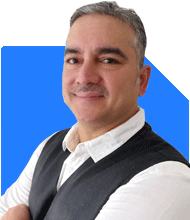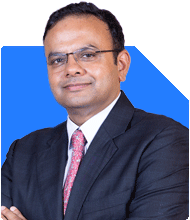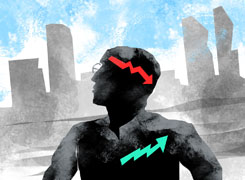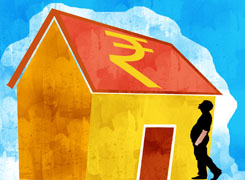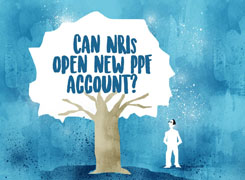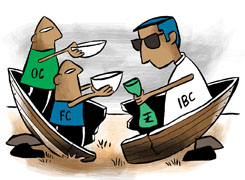Hi I want to invest money monthly 5000 where to invest
Ans: You have done a very wise thing. Deciding to invest Rs.5000 monthly is powerful. Small steady investing builds long-term wealth. Your commitment shows foresight and discipline. Many people postpone, but you have taken action. That deserves appreciation.
Now let us look at different aspects. I will share a 360-degree perspective. This will give you clarity. It will also show how each option works. You will know both strengths and weaknesses.
» Importance of disciplined monthly investing
– Regular monthly investing builds strong habits.
– Market moves up and down, but monthly investment reduces risk.
– It creates a good average purchase cost over time.
– This approach is simple, but very effective.
– Rs.5000 monthly may look small, but grows meaningfully.
– With time, compounding does the magic.
– Your early start helps in wealth creation later.
» Why setting financial goals is important
– Investment is not only about returns.
– It is about matching goals with money.
– Goals like children’s education, retirement, home, must guide choices.
– When goals are clear, the investment style becomes clear.
– Short-term goals need safer instruments.
– Long-term goals can take higher growth options.
– Linking each goal with investment avoids confusion.
» Role of asset allocation
– Asset allocation is more important than timing.
– It means how you spread money across equity, debt, and gold.
– Equity gives growth, debt gives stability, gold protects in crisis.
– Right mix reduces ups and downs.
– Asset allocation also depends on age and risk capacity.
– A young investor can hold more equity.
– Near retirement, stability matters more.
» Equity mutual funds for long-term growth
– Equity mutual funds are good for wealth building.
– They invest in company shares.
– Fund managers research and select quality businesses.
– Professional management helps reduce personal mistakes.
– Actively managed equity funds can beat benchmarks.
– They can adjust strategy when market cycles change.
– They give better growth than debt over long term.
» Debt mutual funds for stability
– Debt funds invest in bonds and deposits.
– They give stability when markets are volatile.
– They provide liquidity, which is useful for short goals.
– Returns are lower than equity, but more predictable.
– They reduce overall portfolio risk.
– You can use them for goals within three years.
» Gold as a hedge
– Gold protects in uncertain times.
– It balances equity and debt exposure.
– Gold prices rise when markets face shocks.
– Allocating a small part to gold reduces stress.
– Digital gold or gold funds are better than physical.
– It is easier to track and manage.
» Why avoid index funds
– Many suggest index funds. But they have limits.
– They only copy the market index.
– They do not adjust for opportunities or risks.
– They can perform poorly in sideways markets.
– Index funds may not beat inflation strongly.
– Actively managed funds can deliver better over long-term.
– A skilled fund manager adds real value.
» Importance of diversification
– Do not put all money in one type.
– Mix equity, debt, and gold.
– Diversification reduces sharp falls.
– Different assets rise at different times.
– A balanced mix gives smooth journey.
– This also ensures money is ready when goals arrive.
» Tax efficiency of mutual funds
– Equity mutual funds have special tax rules.
– Long-term capital gains above Rs.1.25 lakh taxed at 12.5%.
– Short-term capital gains taxed at 20%.
– Debt funds are taxed as per your slab.
– Understanding tax helps in planning withdrawals.
– Equity taxation is more favourable for long holding.
» SIPs versus lumpsum
– SIP means systematic investment plan.
– You invest fixed sum every month.
– It reduces risk of wrong timing.
– Lumpsum works only if large idle money is available.
– SIP is best for salaried investors.
– Your Rs.5000 per month SIP is the right way.
» Regular funds versus direct funds
– Many investors think direct funds save cost.
– But cost saving is small compared to guided growth.
– Direct funds leave you alone in choosing schemes.
– Wrong scheme can damage wealth for years.
– Regular funds give you guidance from a Certified Financial Planner.
– A CFP reviews your goals, risk, and portfolio.
– This guidance gives higher success than DIY approach.
» Insurance and investment separation
– Some mix insurance with investment.
– ULIPs and endowment policies promise returns and cover.
– But they fail in both areas.
– Insurance should cover only risk.
– Investment should create only wealth.
– If you hold LIC or ULIP for investment, consider surrender.
– Reinvest proceeds into mutual funds for better growth.
» Power of reviewing portfolio
– Investing once is not enough.
– Markets and life both change.
– A review once a year is helpful.
– Check if asset allocation is correct.
– See if fund performance is consistent.
– Adjust only if goals demand change.
– Regular review avoids panic and mistakes.
» Emotional discipline in investing
– Markets test patience often.
– Prices rise fast and fall fast.
– Many investors exit in fear.
– Others chase high returns late.
– Discipline means staying invested calmly.
– Focus on goals, not short-term noise.
– SIP investing helps keep emotions under control.
» Importance of liquidity
– Always keep some emergency money.
– Unexpected events can disturb plans.
– Three to six months expense should be liquid.
– Debt funds or savings account work here.
– Do not lock all money in long-term.
– Liquidity protects you from sudden shocks.
» Retirement planning
– Retirement is a long-term goal for everyone.
– Your Rs.5000 monthly can build a base.
– Equity funds are suitable for this goal.
– Long horizon allows compounding to work.
– Regular increase in SIP is necessary with salary growth.
– Retirement funds must not be withdrawn early.
» Children’s education goals
– Education costs rise faster than inflation.
– Equity mutual funds help match this rise.
– Debt portion can be added as goal comes near.
– Start early to reduce pressure later.
– Small steady saving avoids education loans later.
» Behavioural advantages of SIP
– SIPs avoid market timing stress.
– They work automatically, reducing effort.
– Investors develop habit of disciplined saving.
– SIP reduces regret of missing right entry point.
– Over years, it creates large corpus silently.
» Inflation and real returns
– Inflation eats into savings.
– Bank deposits may not beat inflation.
– Equity mutual funds usually deliver higher than inflation.
– Debt gives stability, but equity gives growth.
– Balancing both keeps wealth safe and growing.
» Finally
– You have taken a very strong first step.
– Rs.5000 monthly is meaningful over time.
– Allocate across equity, debt, and gold wisely.
– Use SIPs for steady and stress-free investing.
– Prefer regular funds with guidance of a Certified Financial Planner.
– Avoid mixing insurance and investment.
– Review yearly and stay emotionally disciplined.
– With patience, your wealth journey will be rewarding.
Best Regards,
K. Ramalingam, MBA, CFP,
Chief Financial Planner,
www.holisticinvestment.in
https://www.youtube.com/@HolisticInvestment






